Tired of One-Time Customers? How Agencies Build e-commerce Customer Loyalty
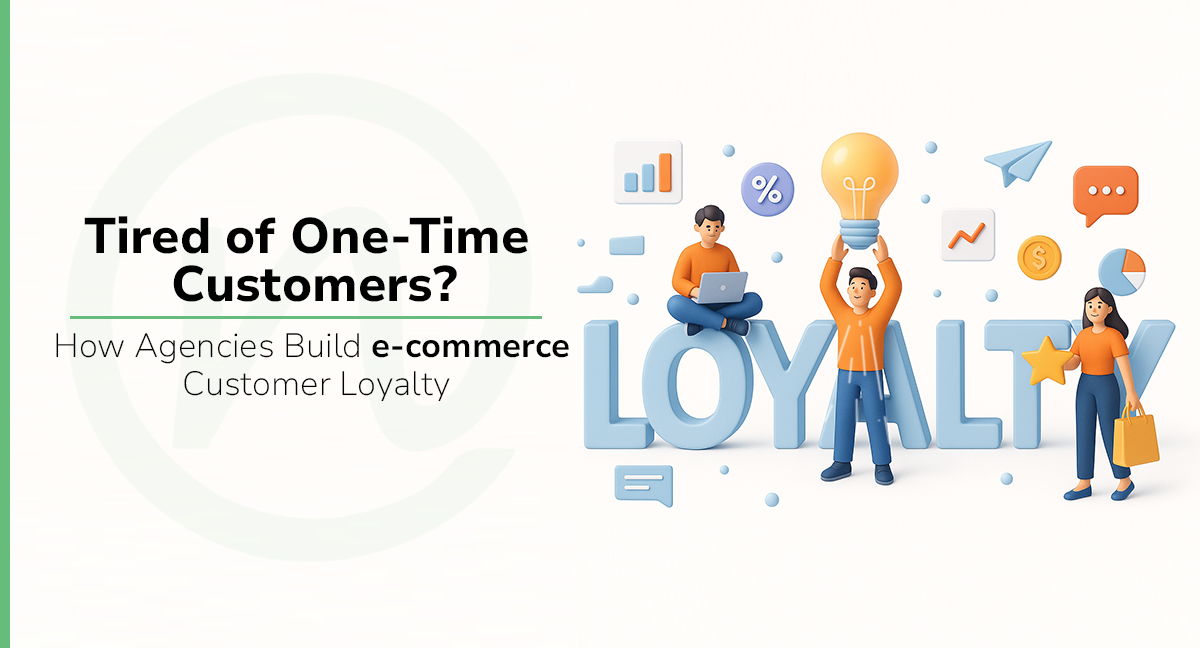
6th June 2025 / in SEO / by Ruturaj Kohok
- Reading time: 11 mins 07 Sec
There has been a massive jump in customer acquisition costs since 2013, making customer loyalty more critical than ever for e-commerce businesses.
We truly get it, okay?
You spend countless hours and dollars attracting new customers, they make one purchase, and then… nothing. They vanish like they never existed!
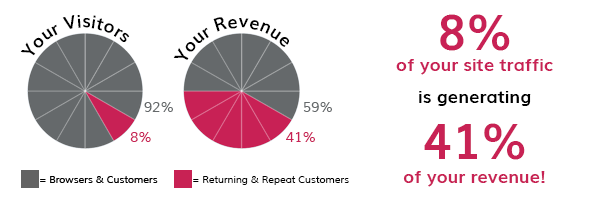
Source: Hubspot
But check this out: just 8% of loyal customers can generate 41% of your entire store’s revenue.
Even better? Simply boosting your customer retention by 5% can increase your profits anywhere from 25% to 95%!
That’s exactly why smart agencies are switching gears from constantly chasing new customers to focusing on keeping the ones they already have.
So what separates the businesses that create die-hard fans from those stuck in the endless cycle of customer acquisition?
We’re about to show you exactly how to turn those one-time customers into ones who keep coming back for more!
Let’s dig in!
Why Do Customers Buy Once and Never Come Back?
Before you can even begin to solve your customer loyalty problem, you need to figure out exactly why shoppers disappear after one purchase.
Let’s check out a few common reasons.
#1 Poor Shopping Experience for Customers:
Do you think a poor customer experience will not affect your brand all that much? Get this:
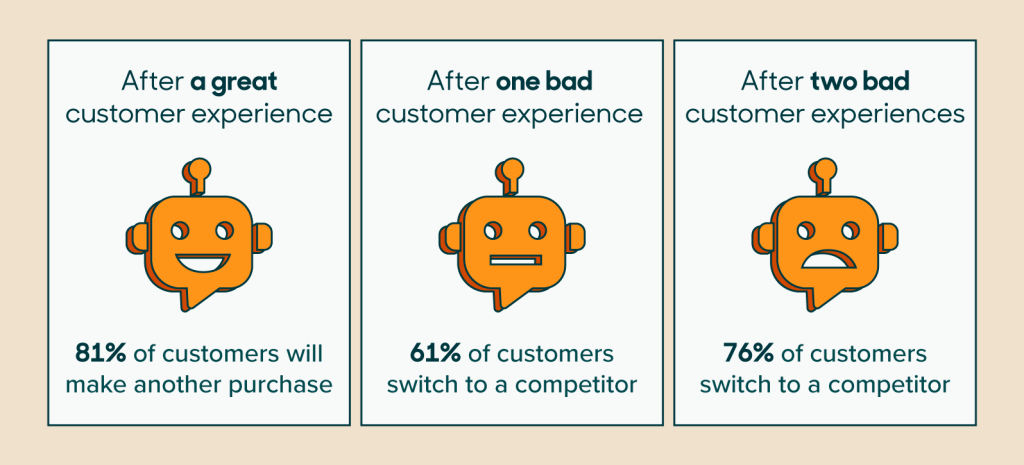
Source: Hired Support
Just one bad experience can drive 61% of e-commerce customers to prefer a competitor brand, and the number increases to 76% after two bad customer experiences.
We’re talking about messy websites, confusing navigation, or pages that take forever to load.
As opposed to this, 81% of customers are more likely to make another purchase if their customer experience is amazing.
These are the businesses that use customer data to tailor product suggestions, emails, and website content.
This customisation creates unique experiences that help shoppers feel valued and understood, which leads to better sales and customer loyalty.
#2 Poor customer service:
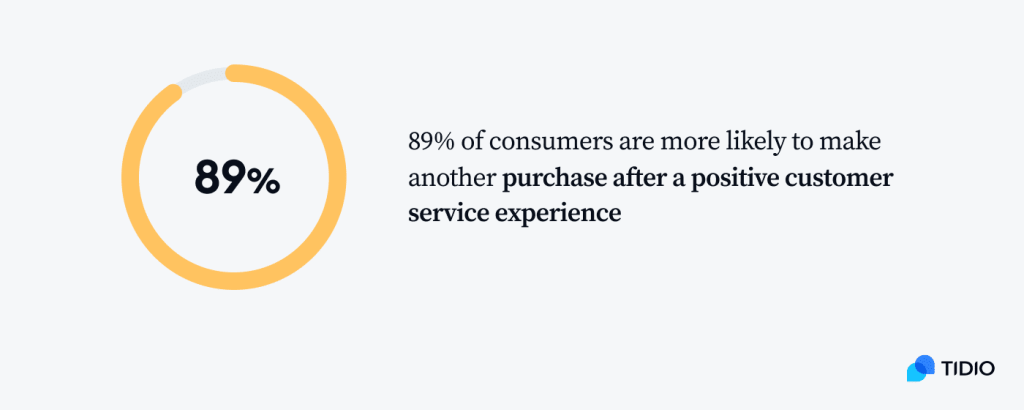
Source: Tidio
This one’s huge: 89% of people are likely to buy again after a positive customer service experience.
So when you have slow response times, missing support channels, or unhelpful representatives, you’re basically pushing money out the door.
#3 Product quality issues:

Source: Doofinder
According to HubSpot’s 2024 Consumer Trends Report, product quality is the top determining factor for whether or not someone buys your product at 51%.
It’s fair to say that if your products don’t live up to expectations, customers simply won’t come back.
If you want to improve customer retention, you need to up your product quality that aligns with customer needs.
#4 Complicated checkout process:
Cart abandonment is one of the biggest concerns for all e-commerce brands.
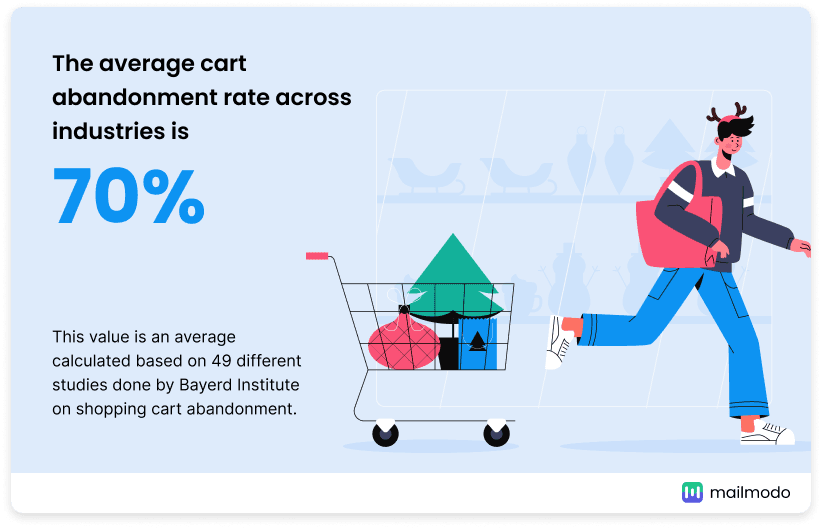
Source: Mailmodo
Did you know? Nearly 70% of online shopping carts get abandoned.
Surprise shipping costs, endless checkout forms, and limited payment options all contribute to this mess.
All these give you insights into what drives customers away. But you should also study what actually drives repeat purchases.
Analyse customer preferences, satisfaction levels, and engagement patterns to create targeted strategies that boost your repeat purchase rate.
This data-driven approach helps you focus your efforts where they’ll make the biggest impact.
8 Strategies That *Actually* Work to Build Customer Loyalty
Okay, so you know why your e-commerce customers leave, now let’s talk about how to make them STAY.
We’ve got eight tried-and-tested strategies that can turn those one-time buyers into customers who keep coming back for more.
Let’s begin!
#1 Personalise the Shopping Experience
Here’s something you need to know:

Source: EcommerceBonsai
80% of consumers are more likely to buy from brands that offer personalised experiences. That’s HUGE!
Think about it: wouldn’t you rather shop somewhere that feels like it “gets” you?
Use your customer data to customise product recommendations, email communications, and website content. When shoppers feel understood, they stick around.
You can also integrate AI to improve your personalisation efforts. It can drive more people to your online store repeatedly.
Personalisation isn’t just nice to have anymore, it’s what customers expect in 2025, and it is a MUST for you to improve customer retention!
#2 Launch a Tiered Loyalty Program
Want to know a secret? Tiered customer loyalty campaigns drive comparatively higher ROI compared to standard programs.
That’s because they tap into something we all love: the feeling of exclusivity!
You can create different membership levels based on how much customers spend or engage with your brand.
As they climb the tiers, you can offer them increasingly valuable rewards. It’s like a game where everyone wins: customers get better perks, and you get higher customer lifetime value.
#3 Use Post-Purchase Emails to Re-engage
Here’s where most businesses miss a MASSIVE opportunity. Post-purchase experience matters a lot!
Post-purchase emails generally generate higher revenue per recipient than your average email campaigns. Think about that for a second!
But again, don’t just send boring order confirmations.
You can create a sequence that includes shipping updates, product usage tips, and personalised recommendations.
Remember, you have to keep your brand fresh in their minds while making their post-purchase experience even better.
#4 Offer Exclusive Member-Only Perks
Who doesn’t love feeling special?
Many customers would gladly create user-generated content in exchange for valuable rewards. That tells us something important: people want to feel like VIPs.
Give your loyal customers early access to sales, member-only discounts, or dedicated customer service lines.
Remember, when you make them feel exclusive, they won’t want to shop anywhere else, and that significantly improves customer retention.
#5 Encourage User-Generated Content
This one’s brilliant – let your customers do the marketing for you!
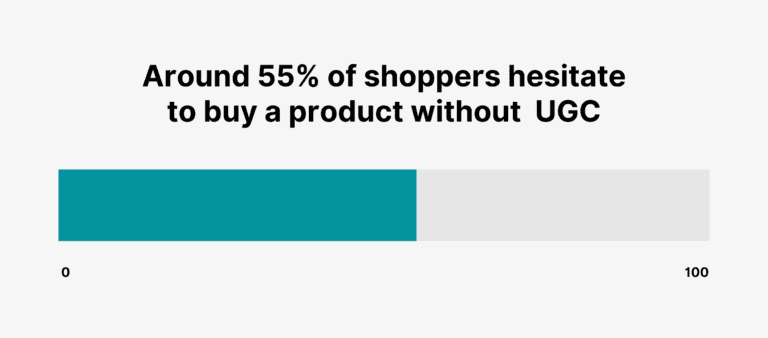
Source: Backlinko
Did you know? 55% of online shoppers might hesitate to make a purchase decision without UGC.
Encourage your e-commerce customers to share reviews, photos, and videos of your products. Offer incentives or simply give them recognition.
When potential customers see real people using and loving your products, trust builds naturally.
#6 Run Limited-Time Collaborations
Want to cut through all the marketplace noise? Limited-edition products work like magic, with many consumers purchasing your products simply due to the fear of missing out.
To improve customer loyalty, partner with complementary brands or influencers to create something fresh and exciting.
It gives your existing customers something new to get excited about while attracting their audiences, too.
#7 Surprise Customers with Unexpected Rewards
Here’s something that’ll blow your mind:
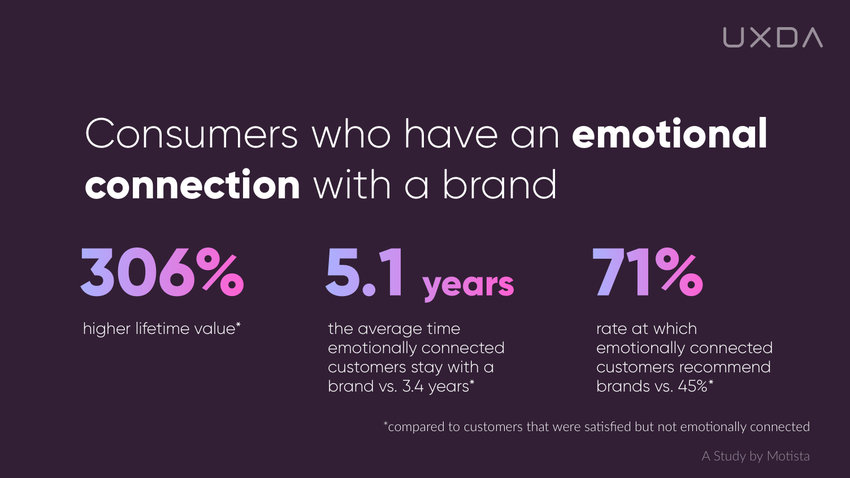
Source: Research Gate
Shoppers who feel emotionally connected to a brand have 306% higher lifetime value than just satisfied customers.
They are also connected to a brand for 5.1 years, as against just satisfied customers (who stay for 3.4 years). Emotional connection also drives them to recommend your brand 71% of the time, as against just satisfied customers (who recommend 45% of the time).
This shows the importance of building an emotional connection to improve customer retention.
Surprise your loyal customers with free shipping upgrades, small gifts, or personalised thank-you notes.
These unexpected gestures create positive memories that last way longer than any discount.
#8 Build a Branded Customer Community
This strategy extends your relationship beyond just transactions.
Many community builders believe that having a branded online community positively impacts operations, while also helping improve customer loyalty.
Create forums, social groups, or exclusive events where customers can connect with your brand AND each other.
When people feel part of a community, they’re much less likely to leave.
Make the post-purchase easy
Here’s something most e-commerce businesses get completely wrong: they think the sale is the finish line.
The moment after someone buys from you is when the real magic happens. We’re talking about your BIGGEST opportunity to turn that one-time customer into a lifelong fan.
#1 Make returns and support easy
Let’s be real. Returns are going to happen whether you like it or not.
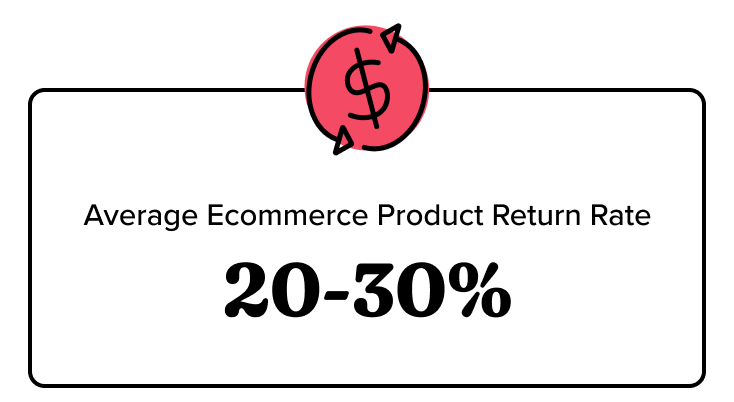
Source: We Supply
The average return rate for online stores sits between 20 and 30%, so you might as well make it work in your favour.
Here’s how to turn a potentially frustrating experience into a customer loyalty-building moment:
- Make your return policy super easy to find and understand
- Provide prepaid return labels that customers can print at home
- Offer multiple return options, such as mail-back, in-store drop-off, whatever works
- Keep customers updated about their return status every step of the way
And don’t forget about customer service. Make sure your support team is available through multiple channels and actually trained to solve problems, not just read from scripts.
#2 Send helpful follow-ups
Post-purchase experience includes emails that are GOLD, but most businesses waste this opportunity with boring, generic messages.
Instead of sending the same old order confirmation, try this:
- Send personalised tips on how to use their new product
- Provide real-time tracking updates
- Suggest complementary products based on what they just bought
That human touch? It’s what turns a boring transaction email into something that actually builds a relationship, resulting in customer loyalty.
#3 Ask for feedback
Here’s what most people don’t realise: asking for feedback isn’t just about getting reviews. It’s about showing customers that you care about their experience.
Get this:

Source: Tidio
92% of consumers are more likely to buy from a business with positive reviews. But you can’t get those reviews if you don’t ask!
Here’s your game plan:
- Ask for product reviews a few days after delivery
- Send satisfaction surveys after customer service interactions
- Keep an eye on social media mentions and comments
Here’s the most important part: when customers give you feedback, DO SOMETHING with it!
And then let them know you made changes based on their input. This shows you actually listen and care about making things better.
Nothing builds customer loyalty faster than a customer feeling heard and valued.
Track and Improve Customer Retention Metrics
We know what you’re thinking: all these strategies sound great, but how do you actually know if they’re working?
Here’s the thing: measuring your efforts is what separates successful customer loyalty strategies from shooting in the dark.
Without proper tracking, you can’t tell which retention initiatives actually move the needle.
Key metrics to monitor:
Let’s check out the essential metrics you need to focus on to measure loyalty and improve customer retention:
- Repeat Customer Rate: This shows the percentage of customers making additional purchases. Calculate this by dividing the number of customers with multiple purchases by your total unique customers. This metric directly reflects your retention success.
- Purchase Frequency: Purchase frequency measures how often customers return to buy. Simply divide your total orders by the number of unique customers. Higher purchase frequency indicates stronger customer relationships – it’s that simple.
- Average Order Value (AOV): AOV reveals how much e-commerce customers spend per transaction. Calculate this by dividing total revenue by the number of orders. As customers become more loyal, this figure typically rises.
- Customer Lifetime Value (CLV): Lifetime Value represents the total revenue expected from a customer throughout your relationship. This forward-looking metric helps you focus retention efforts on high-value customers. The formula is: Average Value of Sale × Number of Repeat Transactions × Average Retention Time.
- Churn Rate: Churn rate shows the percentage of customers who’ve stopped purchasing during a specific period. A high churn rate often signals problems with your customer experience or loyalty initiatives.
- Net Promoter Score (NPS): NPS measures customers’ willingness to recommend your brand, categorising them as promoters, passives, or detractors.
Final Thoughts - Building Lasting eCommerce Relationships
Customer loyalty is what separates thriving e-commerce businesses from those constantly struggling to find new customers.
Loyalty isn’t about getting people to buy more stuff. It’s about creating connections that turn shopping into relationships.
When you nail this, you stop competing on price alone and start winning on experience.
Ready to turn those one-and-done customers into raving fans? Start with one strategy, track your results, and build from there.
Your future loyal customers are waiting – let’s not keep them waiting too long!
Want help implementing these strategies? We’re here to help you build the kind of customer loyalty that actually moves the needle on your business growth.
FAQs:
Personalisation significantly impacts purchasing decisions, as consumers are more likely to buy from brands offering personalised experiences. By using customer data to customise product recommendations, email communications, and website content, businesses can create unique experiences that make shoppers feel understood, increasing both conversion rates and loyalty.
Tiered loyalty programs drive higher ROI compared to standard programs. They establish different membership levels based on customer spending or engagement, offering increasingly valuable rewards as customers progress. This approach creates natural opportunities to connect with customers beyond transactions, establishing emotional connections that boost customer lifetime value.
Post-purchase emails generate much higher revenue per recipient than average email campaigns. Creating a sequence including order confirmations, shipping updates, product usage tips, and personalised recommendations keeps your brand top-of-mind while improving the customer experience, ultimately encouraging repeat purchases.
The post-purchase experience is critical because customers are likely to make repeat purchases from companies offering excellent service. By simplifying returns and support, sending helpful follow-up content, and actively seeking and acting on feedback, businesses can significantly reduce the number of one-time customers and increase loyalty.
Important metrics to monitor include repeat customer rate, purchase frequency, average order value (AOV), customer lifetime value (CLV), churn rate, and Net Promoter Score (NPS). These metrics collectively provide insights into customer behaviour, satisfaction, and the overall effectiveness of loyalty initiatives, allowing businesses to refine their strategies and improve customer retention.





























